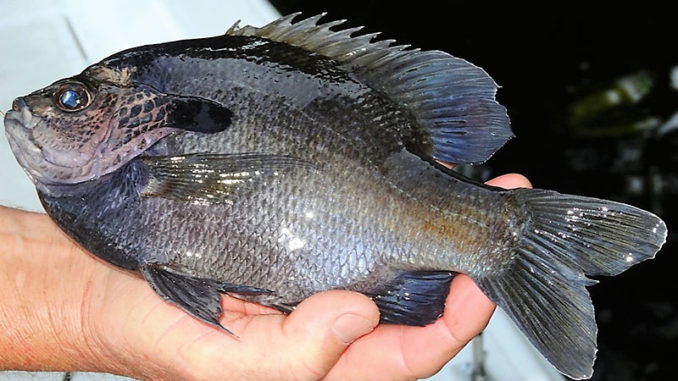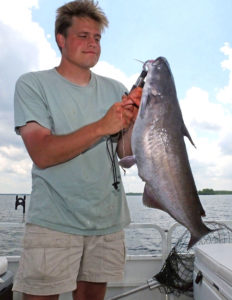
Stripers, catfish, bream headline Santee’s offerings
Fishing action is wild throughout the Santee Cooper lakes in June. Nearly every species is biting strong this month. But action for three of these species is particularly impressive. So go now, because June offers the last couple of weeks to get in on some outstanding striper fishing.
The keeper season on striped bass continues until June 15, and these last couple of weeks offer excellent fishing on both lakes, Marion and Moultrie. Remember, the reason for the season closure isn’t because of poor fishing, but poor survival for released stripers.
Bobby Winters, who guides out of Blacks Camp on the Diversion Canal, said the striper action is outstanding. Fish are scattered across both lakes and in the Diversion Canal.
Winters (843-751-3080) said he’s had a tremendous spring in this area. And during these last few weeks before the season closes until Oct. 1, the striper fishing is best using live bait.
“With the slot limit we have, it’s a great time to catch keeper-sized stripers as well as play catch-and-release, too,” he said. “The Diversion Canal, lower Lake Marion and throughout Lake Moultrie are prime areas. With blueback herring, the fishing is very consistent. But occasionally, we’ll work areas where casting bucktails can produce”
Cats create chaos
Catfish action during June is excellent at Santee. But keeping up with the depths fish are found may require patience. Winters said that even when you’re on a good pattern, catfish may make an unexpected move to a different depth.
“I’m constantly trying to think ahead to where the catfish will be,” he said. “Even when on a strong pattern for a couple of days, I know it can change quickly at this time of the year. So I watch where the forage goes, because the catfish will follow. They’re going to be eating something.”
Winters said this is a prime time to drift-fish. This technique enables him to cover more water and stay on the fish.
Changes in depth are key
“I like to fish areas where we have some bottom depth changes, with hills and valleys on the bottom of the lake,” he said. “Some of my favorite places for June are areas where I’ll drift in 20 to 25 feet of water, then fish over a hump that may rise up to 10 feet deep, drop back into deeper water. This depth variation gives the fish more options on a given day. When I determine a pattern for the day, I’ll work it hard until it slows.”

“It’s not uncommon to hook a couple of really big fish during a day of fishing. But we’re also likely to hook multiple fish in the 3- to 12-pound class at any given time,” he said. “It gets really exciting and lots of fun when I’ve got three folks on the boat and five or six catfish rods are down at the same time.”
“That’s when chaos in the catfish boat is a really good thing,” he said.
Pop the top for bull bream
Bream fishing in June is a major part of the fishing discussion. And while it is a prime bedding month for Santee Cooper bream, it’s also a great time to catch fish on flyrods and popping bugs.
One excellent tactic to catch big bream when they’re not on the beds is to fish the long stretches of riprap. They are in abundance on both lakes. Shorelines with a quick drop to 3 feet of water with lots of woody and weedy cover are also excellent choices.
A variety of popping bug styles will work. But most Santee experts like the ones with tiny rubber legs for enhanced action for big bream. The occasional bite from a chunky largemouth makes things even more interesting.
It’s a color game
Color preference can change daily. But chartreuse, white, black and orange are all potentially lethal on a bull bream at Santee Cooper. When working along riprap or around weedy shorelines, staying on the move is important when buggin’ for bream.
It’s not unusual to catch a handful of fish from a general area. But usually they’re not clustered as bream are when bedded. Keep moving and release small fish, and odds are great you can keep a 20-fish limit of big bream in short order. The best topwater fishing is typically early and late in the day for topwater bream. But cloudy days can provide action all day.
If the topwater action slows, sinking lures such as a green sponge spider or a black ant work well on the fly rod. Also, crickets or worms fished just slightly deeper will continue to catch plenty of fish along these same areas.



Be the first to comment